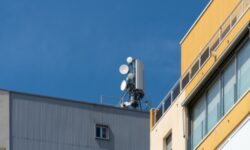NFPA Tackles Fuel Gases Detection With New Standard
If you are a provider of residential systems, you should become familiar with the requirements within NFPA 715.

(Image Credit: Vectorman2017/stock.adobe.com)
During the past several years, the National Fire Protection Association (NFPA) has been very busy with the development of a number of new standards. In my previous columns I have reported on several of these.
In this month’s column, I will discuss NFPA 715, Standard for the Installation of Fuel Gases Detection and Warning Equipment. This standard is being promulgated by a new technical committee on fuel gases warning equipment.
This standard came to creation with a request of Ted Williams with the American Gas Association to develop a standard on the location and installation of residential fuel gas detectors.
After a review and request for public comments from the public, the NFPA Standards Council voted during its August 2019 meeting to create a new technical committee for the development of a standard to address this. During the public comment period regarding the need for such a standard, 20 letters of support were received to one letter in opposition.
The scope of the committee was issued, which is:
This Committee shall have primary responsibility for documents on the installation, performance, maintenance, testing, and use of fuel gases warning equipment for the protection of life, property and mission continuity. This Committee shall address the selection, installation, operation, and maintenance of fuel gases warning equipment.
Concurrent to the formation of this committee, the NFPA Fire Protection Research Foundation commissioned a report on fuel gas leakage within residential occupancies. This report, Combustible Gas Dispersion in Residential Occupancies and Detector Location Analysis was released in August of 2020. A copy of this report may be obtained here.
The report noted that leakage of fuel gasses can and does occur where there is a connection between the supply source and the appliance that uses the product. These appliances include stoves/ovens, water heaters, furnaces and clothes dryers. While these gases are odorized by the purveyors, this does not prevent buildup of the product to an explosive level before it may be detected by the occupants of a residence.
The report identifies two primary fuel gasses that are in use today, natural gas (NG) and liquefied petroleum gas (LPG). NG is delivered through pipelines from the supplier to a residence while LPG is delivered via trucks to a home, to be stored outside in a tank. From the tank, the LPG is converted from a liquid to a gas as it is used by an appliance within the occupancy.
The report noted that depending on the fuel gas being either NG or LPG, the siting of detectors need to be at different mounting heights. NG is lighter than air, so the detectors should be mounted close to the ceiling, while for LPG, the detector should be sited no more than six inches from the floor. The report also noted that the closer the detector was sited next to a potential source of a leak, the quicker the response to a leak will occur.
The initial first edition of NFPA 715 has completed the first draft. This standard is laid out very similar to how NFPA 720, Standard for the Installation of Carbon Monoxide (CO) Detection and Warning Equipment was prior to it being incorporated within NFPA 72, National Fire Alarm and Signaling Code. While NFPA 720 was within the purview of the Correlating Committee for Signaling Systems for the Protection of Life and Property, NFPA 715 is not.
In a review of the proposed standard, a large portion of the document is extracted text from NFPA 72. The scope of the standard is:
1.1.2 This standard shall cover the selection, design, application, installation, location, performance, inspection, testing, and maintenance of fuel gas detection and warning equipment in buildings and structures.
1.1.3 This standard shall contain requirements for the selection, installation, operation, and maintenance of equipment that detects concentrations of fuel gases that could pose a life or property safety risk.
Within Chapter 5 of the proposed standard, Protected Premises Fuel Gas Detection Systems, are the location requirements for fuel gas detectors. Several options are provided:
- As specified by the manufacturer’s published instructions
- For NG, on the ceiling or wall with the top of the detector within 12 inches of the ceiling in the same room as the fuel gas burning appliances
- For LPG, the entire detector is to be installed within 18 inches of the floor in the same room as the fuel gas burning appliances
There is a provision for combination CO/fuel gas detectors to be allowed. As CO is evenly dispersed within a space, the combination detector is to be sited based on the fuel gas that may be introduced within the environment.
In addition to the siting requirements, the proposed standard has requirements for:
- Standby power
- Circuits and conductors
- Notification appliances
- Documentation
- Signal transmissions and the handling of signals
- Inspection, testing and maintenance
The entire document may be reviewed at the NFPA web site. The opportunity for public comment however will have closed before this article is published. While the first draft was not released until March 1, 2021, the closing date for comments was set for May 11, 2021.
If you are a provider of residential systems, you should become familiar with the requirements within this standard. Once published, it will be available to be adopted by the published building and fire codes, similar to how the use of CO detectors and alarms became mandatory.
If you enjoyed this article and want to receive more valuable industry content like this, click here to sign up for our FREE digital newsletters!

Security Is Our Business, Too
For professionals who recommend, buy and install all types of electronic security equipment, a free subscription to Commercial Integrator + Security Sales & Integration is like having a consultant on call. You’ll find an ideal balance of technology and business coverage, with installation tips and techniques for products and updates on how to add to your bottom line.
A FREE subscription to the top resource for security and integration industry will prove to be invaluable.














